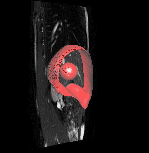
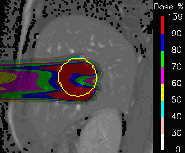
By using intensity modulated radiotherapy (IMRT) and especially intensity modulated proton therapy (IMPT), highly conformal dose distributions can be delivered to a tumour. With the obtained motion data, different delivery methodologies are evaluated with respect to motion sensitivity in order to study the interaction between time-varying delivery and realistic respiratory motion.
 |
 |
| animate | enlarge |
| A hypothetic tumour is animated according to the obtained motion data. A simple one-field proton therapy plan shows the effect of this motion on the dose distribution. | |
Although the reconstructed MR images cannot be used directly for dose calculations, the deformation vectors resulting from the motion estimation are independent of the imaging modality. These motion vectors can be used to deform planning CT images or the displacement vectors can be integrated directly into the dynamic dose calculation.
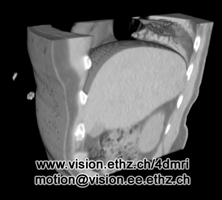 |
A CT volume was animated according to the motionfield determined from 4DMRI of the same patient. |
Potential gating techniques for radiation therapy and MRI guided Focused Ultrasound (MRgFUS), which are applicable in real-time, are currently being evaluated with respect to residual motion and optimal placement of surrogates.
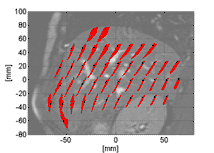 |
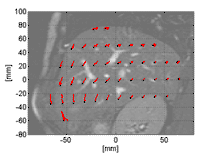 |
| enlarge | |
| Point positions without and with gating (30% duty cycle) | |